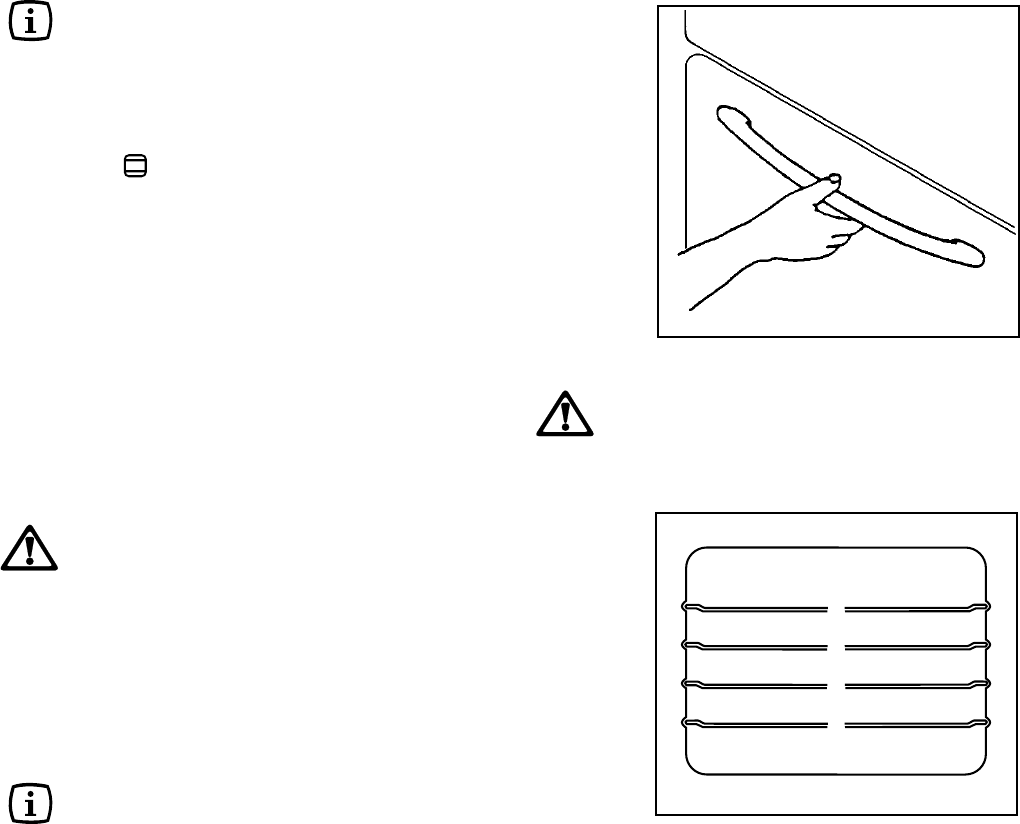
Before cooking for the first time, carefully wash
the oven accessories.
Once the oven has been installed:
a) set the thermostat knob to MAX (250);
b) switch the oven function control knob to conventional
cooking ( );
c) allow the oven to run empty for approximately 45
minutes;
d) open a window for ventilation.
During this time, an unpleasant odour may be emitted.
This is absolutely normal, and is caused by residues of
manufacturing.
Repeat this operation for the grill and fan cooking function.
Once this operation is carried out, let the oven cool down,
then clean the oven cavity with a soft cloth soaked in warm
soapy water.
FO 2161
Fig. 5
To open the oven door, always catch the
handle in its central part (Fig. 5).
When the oven is first installed
Always cook with the oven door closed.
Stand clear when opening the drop down oven door.
Do not allow it to fall open - support the door using the
door handle, until it is fully open.
The oven has four shelf levels. The shelf positions are
counted from the bottom of the oven as shown in the
diagram.
Do not place cookware directly on the oven base.
Condensation and steam
When food is heated it produces steam in the same way
as a boiling kettle. The oven vents allow some of this
steam to escape. However, always stand back from
the oven when opening the oven door to allow any
build up of steam or heat to release.
If the steam comes into contact with a cool surface on the
outside of the oven, e.g. a trim, it will condense and
produce water droplets. This is quite normal and is not a
fault with the oven. To prevent discoloration, regularly
wipe away condensation and also soilage from surfaces.
Using the Oven
4
3
2
1
FO 0019
Fig. 6
F
Cookware
Use any oven proof cookware which will withstand
temperatures of 250°C.
Baking trays, oven dishes, etc. should not be placed
directly against the grid covering the fan at the back of
the oven, or placed on the oven base.
Do not use baking trays larger than 30 cm x 35 cm (12
in x 14 in) as they will restrict the circulation of heat
and may affect performance.
Hints and Tips
The effects of dishes on cooking
results
Dishes and tins vary in their thickness, conductivity,
colour, etc. which affects the way they transmit heat to
the food inside them.
A Aluminium, earthenware, oven glassware and bright
shiny utensils reduce cooking and underneath
browning.
B Enamelled cast iron, anodized aluminium, aluminium
with non-stick interior and coloured exterior and dark,
heavy utensils increase cooking and underneath
browning.













